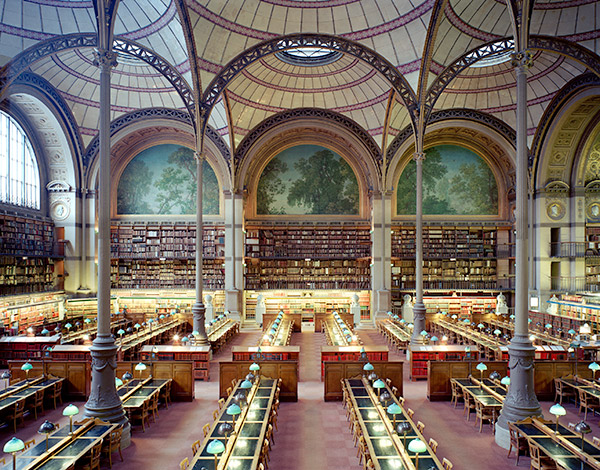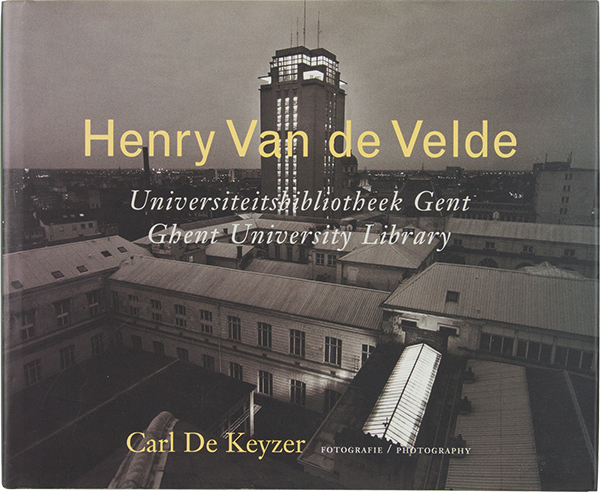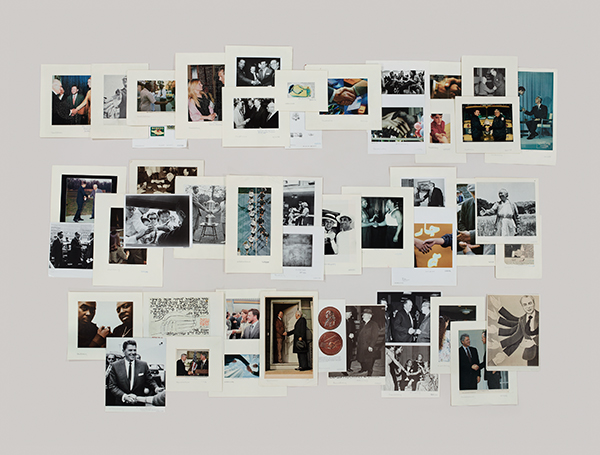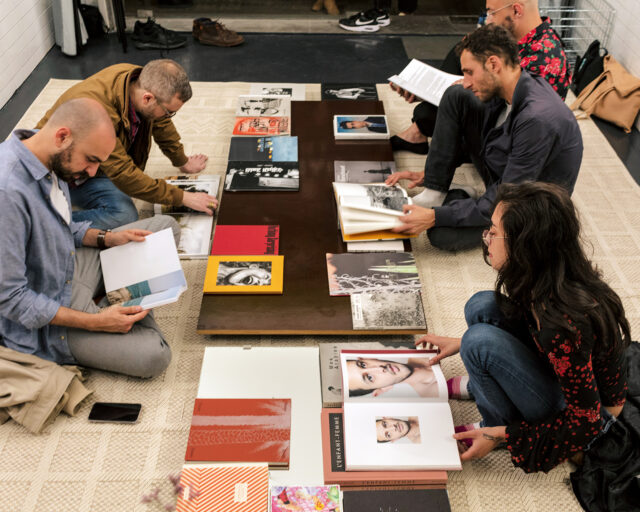Library as Studio
Since 2010, thanks to artist Nayland Blake, founding chair of the ICP/Bard MFA program, I have had the privilege of teaching a class with the program’s advanced photographic practice students. Each autumn, I hand out blank catalogue cards and ask the MFAs to define the word artist on one side and librarian on the other. Then the cards are tucked away into an envelope and we revisit them in the last class of the semester. Over time, I have evolved my own definitions that are derived from these conversations—and still evolving.
An artist creates intellectually edifying (informative and inspiring) content of any kind.
A librarian creates enduring, intellectually mediated, and hospitable access to edifying (informative and inspiring) content of any kind.
The relationship between artists and libraries is one that cannot be well understood in such a simple exercise, but is one that I continue to explore.
What attracts artists to libraries as subjects? Often it is the notion of the library as memory—sometimes as an institution with the authority to select and preserve a canon, sometimes as a microcosm of all human society—and, as in the case of Taryn Simon, I would daresay that it is a celebration of the reorganization of knowledge that can/must happen within its walls.
In fact, there are many artists working in this space. I have selected a finite number of (mostly) photo-based projects that utilize images of—or from—libraries as a springboard to exploring larger philosophical questions that libraries can serve to elucidate.

Candida Höfer, Bibliotheque nationale de France XXIII 1998, 1998
© the artist, Köln / VG Bild-Kunst, Bonn
Alain Resnais, Toute la mémoire du monde, 1956
Toute la mémoire du monde (All the world’s memory) is a meditation on the Bibliothèque nationale de France (BNF) with a thoughtful script by Remo Forlani. The film declares the BNF, as France’s national library, to be encyclopedic—and not just an encyclopedia of a single European nation, but of the entire world as seen through the acquisition of knowledge and goods that characterizes colonialist enterprise.

Carl De Keyzer, Henry Van de Velde: Universiteitsbibliotheek Gent/Ghent University Library 1797–1997
Ghent University Library, 1997
Carl De Keyzer, a Magnum photographer, was commissioned to document the two-hundredth birthday of the Henry Van de Velde Library in Ghent, Belgium, much as Alain Resnais commemorated the Bibliothèque nationale. The resulting images have a marked affinity: dramatically lit, dark, Gothic. It is actually a view of a library as a chaotic storehouse, and portrays its stewards and researchers in a kind of mannered way, with deep shadows and awkward moments of research and unconscious thought.
Philipe Gronon, Catalogue de la table des matières (A–Z), 1996

Philippe Gronon, Catalogue de la table des matières (A–Z), élément no. 4, Bibliothèque de l’Assemblée nationale Paris, 1996
French photographer Philippe Gronon is a keen observer of utilitarian objects that are mysterious or generally unnoticed, yet stand in as symbols of a collective past. Two of his eponymous series of such objects portray those ubiquitous, mysterious elements in libraries called card catalogues, and reading/writing tables, which bear the subtle marks of human intellectual effort over time.

San Jose earthquake, Dr. Martin Luther King, Jr. Public Library, San Jose, California, October 30, 2008. Image by Carole Correa-Morris
Melissa Dubbin and Aaron S. Davidson, Fallen Books, 2008
Fallen Books, published by onestar press, is a collection of images taken not by the artists, but by the discoverers of libraries after earthquakes have shaken them. Each photograph is catalogued according to the level of the earthquake on the Modified Mercalli scale, and its location. While it is an index, and there is evidence of humans, it is chiefly a thought experiment about one very specific condition of stewardship: that libraries strive for order within chaos, but also preserve the documents of that chaos and add it, in order, to the shelves.
Taryn Simon, The Picture Collection, 2013

Taryn Simon, Folder: Handshaking, 2012
© the artist, Courtesy Gagosian
Taryn Simon’s series The Picture Collection is a conceptual project that turns out to be a love letter to the work that librarians do. Simon is an artist who researches, studies, and reads thoroughly into each one of her projects, so we cannot be astonished by the depth of what went into her elegant, formal exhibition of the selected folders: an examination more of the taxonomy underlying the collection, studying its archives, selecting folders, and simultaneously developing the online database Image Atlas, created by Simon and the late computer-programmer Aaron Swartz.

























